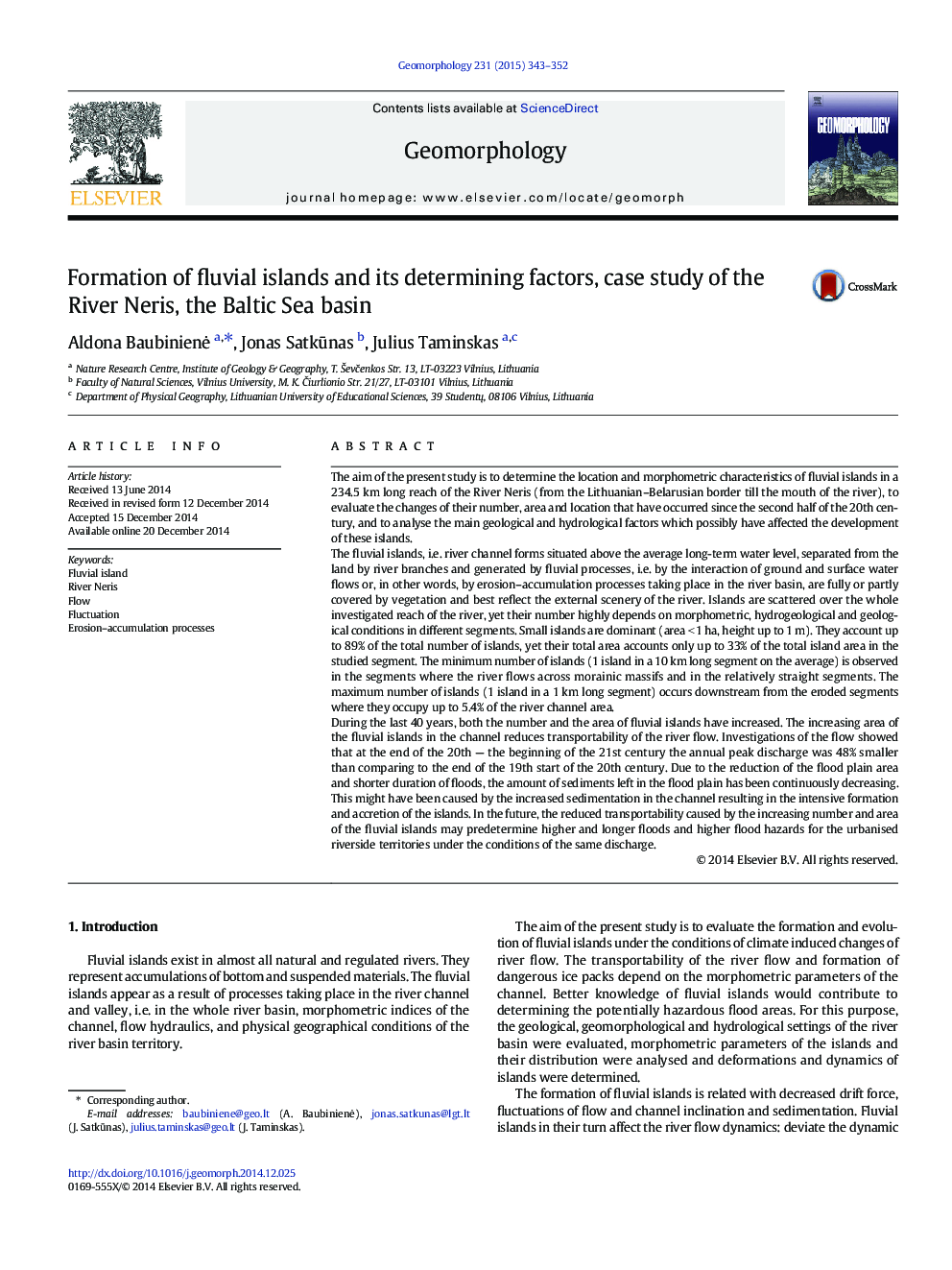| کد مقاله | کد نشریه | سال انتشار | مقاله انگلیسی | نسخه تمام متن |
|---|---|---|---|---|
| 4684342 | 1635418 | 2015 | 10 صفحه PDF | دانلود رایگان |
• Morphometric characteristics of fluvial islands of the Neris River are determined.
• 48% decrease of the maximal annual flood was at the turn of the 20–21 centuries.
• In the last 40 years both the number and area of fluvial islands have increased.
• Higher flood hazards for urbanized riverside are possible under the same discharge.
The aim of the present study is to determine the location and morphometric characteristics of fluvial islands in a 234.5 km long reach of the River Neris (from the Lithuanian–Belarusian border till the mouth of the river), to evaluate the changes of their number, area and location that have occurred since the second half of the 20th century, and to analyse the main geological and hydrological factors which possibly have affected the development of these islands.The fluvial islands, i.e. river channel forms situated above the average long-term water level, separated from the land by river branches and generated by fluvial processes, i.e. by the interaction of ground and surface water flows or, in other words, by erosion–accumulation processes taking place in the river basin, are fully or partly covered by vegetation and best reflect the external scenery of the river. Islands are scattered over the whole investigated reach of the river, yet their number highly depends on morphometric, hydrogeological and geological conditions in different segments. Small islands are dominant (area < 1 ha, height up to 1 m). They account up to 89% of the total number of islands, yet their total area accounts only up to 33% of the total island area in the studied segment. The minimum number of islands (1 island in a 10 km long segment on the average) is observed in the segments where the river flows across morainic massifs and in the relatively straight segments. The maximum number of islands (1 island in a 1 km long segment) occurs downstream from the eroded segments where they occupy up to 5.4% of the river channel area.During the last 40 years, both the number and the area of fluvial islands have increased. The increasing area of the fluvial islands in the channel reduces transportability of the river flow. Investigations of the flow showed that at the end of the 20th — the beginning of the 21st century the annual peak discharge was 48% smaller than comparing to the end of the 19th start of the 20th century. Due to the reduction of the flood plain area and shorter duration of floods, the amount of sediments left in the flood plain has been continuously decreasing. This might have been caused by the increased sedimentation in the channel resulting in the intensive formation and accretion of the islands. In the future, the reduced transportability caused by the increasing number and area of the fluvial islands may predetermine higher and longer floods and higher flood hazards for the urbanised riverside territories under the conditions of the same discharge.
Journal: Geomorphology - Volume 231, 15 February 2015, Pages 343–352
